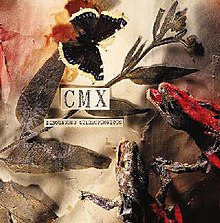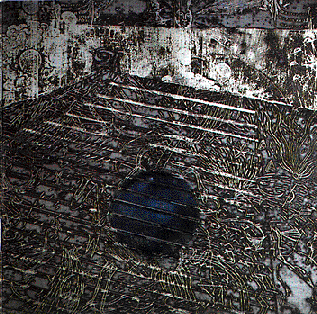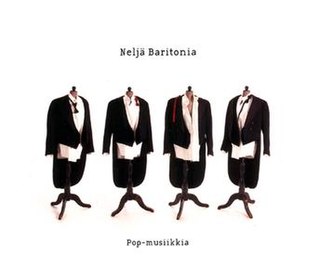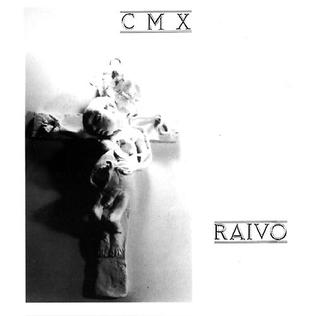| Dinosaurus Stereophonicus | ||||
|---|---|---|---|---|
 | ||||
| Studio album by | ||||
| Released | October, 2000 | |||
| Recorded | May-August, 2000 at Inkfish Studios | |||
| Genre | Progressive rock | |||
| Length | 118:54 | |||
| Label | Herodes, EMI | |||
| Producer | Gabi Hakanen and Illusion Rake | |||
| CMX chronology | ||||
| ||||
| Professional ratings | |
|---|---|
| Review scores | |
| Source | Rating |
| Allmusic | |
| Soundi | |
Dinosaurus Stereophonicus is the eighth album by the Finnish rock group CMX, released in 2000. It was recorded after the band had decided to stop touring and become a full-time studio band. The decision only lasted till 2002. [3]

Finland, officially the Republic of Finland, is a Nordic country in Northern Europe bordering the Baltic Sea, Gulf of Bothnia, and Gulf of Finland, between Norway to the north, Sweden to the northwest, and Russia to the east. The capital and largest city is Helsinki. Other major cities are Espoo, Vantaa, Tampere, Oulu and Turku.
Rock music is a broad genre of popular music that originated as "rock and roll" in the United States in the early 1950s, and developed into a range of different styles in the 1960s and later, particularly in the United States and the United Kingdom. It has its roots in 1940s and 1950s rock and roll, a style which drew heavily from the genres of blues, rhythm and blues, and from country music. Rock music also drew strongly from a number of other genres such as electric blues and folk, and incorporated influences from jazz, classical and other musical styles. Musically, rock has centered on the electric guitar, usually as part of a rock group with electric bass, drums, and one or more singers. Usually, rock is song-based music usually with a 4/4 time signature using a verse–chorus form, but the genre has become extremely diverse. Like pop music, lyrics often stress romantic love but also address a wide variety of other themes that are frequently social or political.
CMX, originally Cloaca Maxima, is a Finnish rock band. They originally played hardcore punk, but soon expanded to play a wide variety of rock formats, including progressive rock, heavy metal, and mainstream rock 'n' roll. Throughout their career, they have been influenced by progressive rock bands such as Rush, Yes, Tool and King Crimson. The progressive influence is most evident on their albums Dinosaurus Stereophonicus (2000) and Talvikuningas (2007).
Contents
The two-hour-long double album is heavily influenced by 1970s progressive rock, such as King Crimson, Pink Floyd and Yes. Many of the songs contain long solos and odd time signatures. Keyboards are also an important part of the album's sound. [4] [5]
A double album is an audio album which spans two units of the primary medium in which it is sold, typically records and compact disc. A double album is usually, though not always, released as such because the recording is longer than the capacity of the medium. Recording artists often think of double albums as comprising a single piece artistically; however, there are exceptions such as John Lennon's Some Time in New York City and Pink Floyd's Ummagumma and OutKast's Speakerboxxx/The Love Below. Another example of this approach is Works Volume 1 by Emerson Lake and Palmer, where side one featured Keith Emerson, side two Greg Lake, side three Carl Palmer, and side four was by the entire group.
Progressive rock is a broad genre of rock music that developed in the United Kingdom and United States throughout the mid- to late 1960s. Initially termed "progressive pop", the style was an outgrowth of psychedelic bands who abandoned standard pop traditions in favour of instrumentation and compositional techniques more frequently associated with jazz, folk, or classical music. Additional elements contributed to its "progressive" label: lyrics were more poetic, technology was harnessed for new sounds, music approached the condition of "art", and the studio, rather than the stage, became the focus of musical activity, which often involved creating music for listening rather than dancing.

King Crimson are an English progressive rock band formed in London in 1968. King Crimson have been influential both on the early 1970s progressive rock movement and many contemporary artists. Although the band has undergone numerous formations throughout its history, Robert Fripp is the only consistent member of the group and is considered the band's leader and driving force. The band has earned a large cult following. They were ranked No. 87 on VH1's 100 Greatest Artists of Hard Rock. Although considered to be a seminal progressive rock band, they have often distanced themselves from the genre: as well as influencing several generations of progressive and psychedelic rock bands, they have also been an influence on subsequent alternative metal, hardcore and experimental/noise musicians.
Despite being over six minutes long, "Myrskyn ratsut" was CMX's first number one single. String instruments and steel guitar can be heard on the slow, calm and melodic song. [6] Shortly thereafter, "Jatkuu niinkuin sade" became the second CMX song to top the Finnish singles chart. [7] Dinosaurus Stereophonicus was certified gold quickly after its release. [8]

In the music industry, a single is a type of release, typically a song recording of fewer tracks than an LP record or an album. This can be released for sale to the public in a variety of different formats. In most cases, a single is a song that is released separately from an album, although it usually also appears on an album. Typically, these are the songs from albums that are released separately for promotional uses such as digital download or commercial radio airplay and are expected to be the most popular. In other cases a recording released as a single may not appear on an album.

String instruments, stringed instruments, or chordophones are musical instruments that produce sound from vibrating strings when the performer plays or sounds the strings in some manner.

Steel guitar is a type of guitar or the method of playing the instrument. Developed in Hawaii by Joseph Kekuku in the late 19th and early 20th centuries, a steel guitar is usually positioned horizontally; strings are plucked with one hand, while the other hand changes the pitch of one or more strings with the use of a bar or slide called a steel.




















